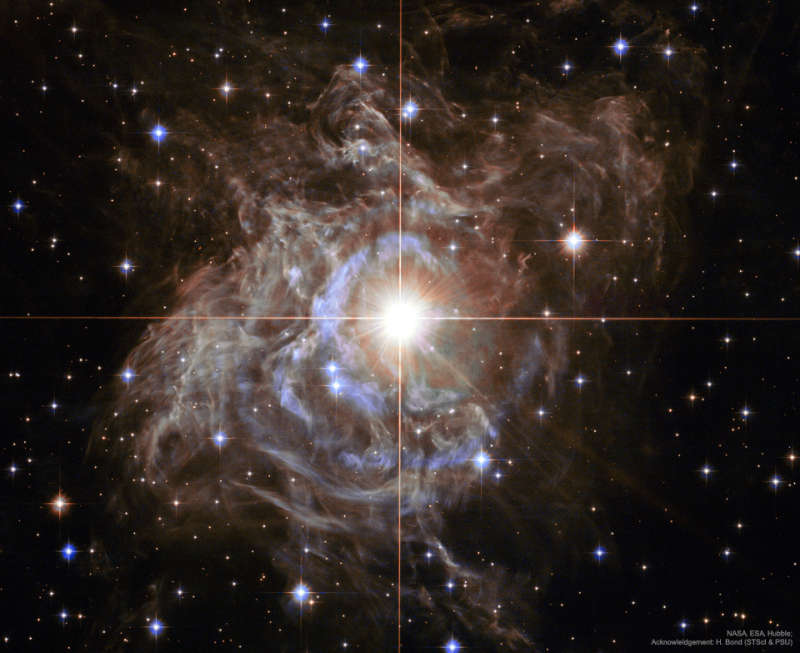
|
Credit & Copyright: NASA,
ESA,
Hubble Heritage Team;
Acknowledgement:
Howard Bond
(STScI &
Penn State U.)
Explanation:
In the center is one of the most important stars on the sky.
This is partly because, by coincidence, it is surrounded by a dazzling
reflection nebula.
Pulsating
RS Puppis,
the brightest star in the image center, is some ten times
more massive than our Sun and on average 15,000 times more luminous.
In fact, RS Pup is a
Cepheid type
variable star,
a class of stars whose
brightness
is used to estimate distances to nearby galaxies
as one of the first steps in establishing the
cosmic
distance scale.
As RS Pup pulsates
over a period of about 40 days,
its regular changes in brightness are also
seen along the nebula delayed in time,
effectively a light echo.
Using measurements of the time delay and angular size of the nebula, the known
speed of light allows astronomers to geometrically
determine the distance to
RS Pup to be
6,500 light-years, with a remarkably small error of
plus or minus 90
light-years.
An impressive achievement for stellar astronomy, the
echo-measured
distance also more accurately establishes the true brightness of RS Pup, and by extension other Cepheid stars,
improving the knowledge
of
distances to
galaxies beyond
the Milky Way.
The
featured image
was taken by the
Hubble Space Telescope.
|
January February March April May June July August September October November December |
| ||||||||||||||||||||||||||||||||||||||||||||||||
NASA Web Site Statements, Warnings, and Disclaimers
NASA Official: Jay Norris. Specific rights apply.
A service of: LHEA at NASA / GSFC
& Michigan Tech. U.
Based on Astronomy Picture
Of the Day
Publications with keywords: cepheid
Publications with words: cepheid
See also:
